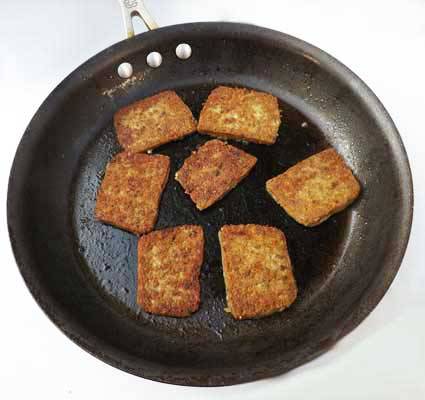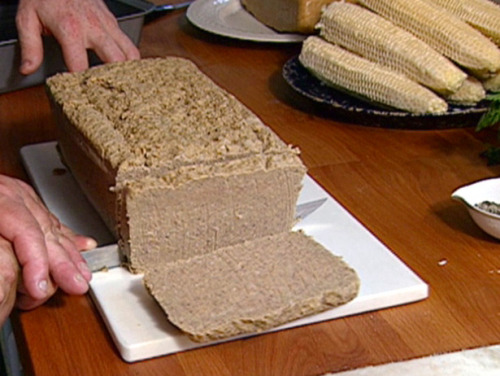peashooter85:A Salute to Scrapple,As a native Pennsylvanian who lives in the midst of a large Pennsy
peashooter85:A Salute to Scrapple,As a native Pennsylvanian who lives in the midst of a large Pennsylvania German community (though I am also half Italian descent), how can I not at some point give a shout out to the ancient dish commonly known as breakfast meatloaf?Americans today can be very fickle and picky eaters, and various ethnic dishes are often sadly turned away because of the common “ick factor”. I can guarantee you 100% that your ancestors did not share such habits. Back in the day it was very common for families to practice “offal eating”, which means that when an animal is slaughtered, every bit of the animal is consumed from tail to snout. “Waste not, want not” was more than just a motto, it was an everyday way of life. Scrapple (aka pon haus) is a result of this tradition. Brought to the United States by the Pennsylvania Dutch, a group of German immigrants who settled Pennsylvania during the colonial era, scrapple is kind of like a meatloaf made from the various trimmings and organs left over from slaughtering a pig. Usually the bones and organs are boiled in a large pot until the scraps of meat fall off the bone. Then the pieces of meat are further minced, mixed with cornmeal, buckwheat, and spices then molded into a loaf. The loaf is sliced and pan-fried, traditionally served as a breakfast food.Today scrapple is not a common food for the average American diet, but is still popular among ethnic groups in the Eastern United States. It can be found in some grocery stores and is often common in small mom and pop stores (a small store near wear I live sells it). Furthermore some eastern cities and towns, (Philadelphia for example) have annual scrapple festivals. If ever you have a chance to sample some scrapple, try it before you say “ick”.Note: Scrapple is ridiculously high in fat and cholesterol, so I wouldn’t eat it too often. -- source link
Tumblr Blog : peashooter85.tumblr.com

